Playtomic and PwC’s Strategy& team have released the Global Padel Report 2025, revealing how padel has become the world’s fastest-growing sport. This comprehensive analysis builds on previous years’ data to provide the most current understanding of the padel industry’s explosive global expansion.
Padel Numbers in Brief
Padel is now played in over 165 countries, with 16 new nations adopting the sport in 2025 alone. Global court numbers have now passed the 50,000 mark, with over 7,000 built in 2024 alone and 81,000 projected by 2027. In 2024 alone, over 3,282 new padel clubs opened—an average of one every 2.5 hours. This represents a year-on-year increase of 26% that translates to nearly nine new clubs per day.
The 2025 Global Padel Report by Playtomic highlights a 26% surge in new clubs, over 7,000 new courts, and rapid expansion beyond traditional hotspots, with countries like the US, Indonesia, and Colombia emerging as key markets.
Padel’s stickiness is one of its biggest strengths, with 92% of players returning after their first game – a stat that few sports can rival.
Regional Growth and Performance
The UK is named as the leading nation worldwide for gross monetary value per court (up 74% from 2023), with 329 courts built in Britain in 2024 driven by clubs offering additional services and high occupancy rates.
An unstoppable phenomenon continues to expand worldwide, with projections reaching 70,000 padel courts by 2026. Digital platforms drive accessibility, while multi-racquet facilities are becoming increasingly common in emerging markets.
Market Analysis and Key Findings
The 2025 report provides comprehensive insights into padel’s transformation from a niche sport to a mainstream global movement. However, behind the headline statistics lies a troubling global phenomenon that threatens the sport’s sustainable development.
Unprecedented Club Growth—But At What Cost?: The addition of over 3,280 new clubs across 90+ countries in 2024 demonstrates padel’s universal appeal, but this growth masks a critical problem. Approximately one club every 2.5 hours is being opened worldwide, but the majority of these are not being operated by people who understand or care about padel. Industry operators like PADEL1969 observe a global pattern of financial speculation that transcends geographic boundaries: opportunistic investors with zero knowledge of padel are flooding the market in every continent.
Infrastructure Acceleration Without Vision: With over 7,000 courts built in 2024 and projections of 81,000 courts by 2027, the sport is expanding rapidly across multiple continents—Europe, Latin America, North America, Asia, and Africa. Yet this expansion is driven largely by financial opportunity-seekers, not genuine stakeholders committed to developing the sport.
The Global “Taxi Driver” Phenomenon: This isn’t just isolated to one region—it’s a worldwide crisis afflicting the markets that matter most. From the established UK market to the explosive growth in the USA, from emerging Asia (particularly Indonesia) to mature European markets (Germany and France), the same destructive pattern emerges: people with no experience in padel, no passion for the sport, and no understanding of its culture are opening clubs purely to smell quick money. At PADEL1969 we meet weekly many new entrepreneurs just thinking opening a Padel club is a good idea because supply and demand is having such a big cap.
Key Markets Under Siege:
United States: With 688 courts across 180 facilities and over 50% built since January 2024, the US represents padel’s most explosive growth story. Yet American venture capitalists and real estate speculators are treating padel clubs as trendy investment assets, indistinguishable from CrossFit franchises. Most US operators have never played padel and have zero understanding of the sport’s Spanish heritage, technical demands, or community culture.
Germany: With a population of 86 million (compared to the UK’s 65 million) and a massive existing tennis player base to convert to padel, Germany represents padel’s greatest untapped potential in Europe. The combination of German sports infrastructure, disposable income, and an established racquet sports culture creates ideal conditions for exponential padel growth. However, Germany is already experiencing the same flood of financial speculators who see padel as the next investment trend, with operators lacking any genuine understanding of the sport or commitment to building quality facilities and communities.
Indonesia: As padel explodes across Southeast Asia, Indonesia represents the sport’s Asian frontier. However, rapid growth is attracting financial speculators at an alarming rate, with most club operators having no experience in padel and minimal understanding of what quality facilities and programming require.
Germany and France: These European powerhouses are experiencing accelerating padel development, driven largely by growing player interest and rising infrastructure investment. Yet here too, financial investors with no sport knowledge are flooding the market, treating padel as an anonymous real estate asset rather than a sport requiring genuine operational expertise and community commitment.
Most market entrants across all these regions have never played padel. They have no comprehension of the sport’s technical elements, social culture, or player journey. Their decision-making is purely financial: high demand exists, supply is constrained, therefore money can be made quickly. This fundamental disconnect from the sport they’re operating in creates a host of operational and strategic failures—poor court maintenance, weak programming, inadequate coaching infrastructure, and a general inability to build genuine player communities.
The Market Correction is Coming: As supply catches up with demand—projected to reach 70,000 courts by 2026—the market will ruthlessly separate serious operators from speculators. Operational excellence, genuine sport knowledge, qualified coaching staff, authentic community building, and sustainable business models will determine winners from losers. Those operating on pure speculation and short-term thinking will face catastrophic failure rates, leaving behind abandoned facilities, disillusioned players, and damaged communities across the globe.
Many new operators lack not only sport industry expertise but also basic business acumen in hospitality, member retention, and community engagement. When the market tightens and easy money disappears, these operators will exit as quickly as they entered, leaving scorched earth behind.
The Sport’s Long-Term Health Depends on Quality: Padel’s explosive growth is undermined by the infiltration of speculators who treat padel clubs as anonymous financial assets rather than community institutions. The sport’s sustainable development requires operators who understand padel deeply, who are committed to excellence, and who recognize that building thriving clubs requires genuine passion for the sport and dedication to player development and community building.
The distinction between serious, knowledgeable operators and financial speculators will become the defining factor in determining which padel markets thrive and which collapse under the weight of poor quality and wasted investment.
The USA Market: Early Boom, Inevitable Correction
The United States represents one of padel’s newest and most critical growth frontiers. As of Q2 2025, there were 688 padel courts across 180 facilities in the U.S., with over 50% of those courts installed since January 2024. This explosive infrastructure growth mirrors the global pattern observed in emerging padel markets.
However, the USA is experiencing the same problematic dynamics that plague other rapidly-growing markets. The combination of celebrity endorsements, media attention, and promise of quick returns has attracted a flood of investors with zero padel knowledge. The US padel sports market is growing at a CAGR of 6% during the forecast period 2025-2034, but this growth masks deeper structural problems.
Most new US padel club operators are venture capitalists, real estate speculators, and financial entrepreneurs who have never touched a paddle. They view padel courts as trendy real estate investments similar to CrossFit boxes or boutique fitness studios—anonymous assets that print money during growth phases. Many American operators have made zero effort to understand padel’s Spanish origins, its technical nuances, its community-driven culture, or what distinguishes a quality padel experience from a mediocre one.
The USA market is experiencing the same cycle seen globally: high demand, constrained supply, and therefore “easy money” attracts speculators. But this period is temporary. As infrastructure catches up with demand—a process accelerating rapidly—operational quality will become the differentiating factor. American padel clubs built on financial speculation rather than genuine sport knowledge and commitment will face harsh realities when the market matures. Poor facility management, weak player programming, inadequate coaching infrastructure, and inability to build authentic communities will expose these operators as what they are: financial tourists, not sport operators.
The trajectory in the USA will mirror what’s happening globally: a market correction that separates serious, knowledgeable operators from speculators who entered purely to capture short-term profits.
Geographic Diversification: The key growth markets driving padel’s global expansion are the USA, UK, Indonesia, Germany, and France. These markets represent padel’s most critical frontiers for 2025 and beyond, each experiencing rapid infrastructure development, growing player bases, and accelerating investment. However, market maturity varies significantly by region, with established markets like the UK and emerging powerhouses like Indonesia and the USA all facing the same fundamental problem: an influx of financial speculators with zero understanding of padel.
Player Retention: With 92% of players returning after their first experience, padel demonstrates an exceptional stickiness rate that far exceeds most other sports. This metric is crucial for sustainable growth and suggests that once players try padel, they become committed participants. However, retention at the club level depends heavily on operational quality, member experience, and facility maintenance—areas where experienced operators diverge significantly from less sophisticated entrants.
The Future of Padel
The 45-page Global Padel Report 2025 provides exclusive content about market analysis and growth evolution, current trends and future prospects of the padel industry, regions with the highest growth rates, and key success factors to run a padel club.
The data collected through Playtomic’s platform—which serves clubs, tournaments, and players across the global padel ecosystem—provides an unparalleled view into industry trends. The convergence of infrastructure expansion, club proliferation, geographic diversification, and exceptional player retention suggests that padel is entering a phase of sustainable, long-term growth.
By 2026, projections indicate 70,000 padel courts globally, representing a 40% increase from current levels. This growth trajectory positions padel to become one of the world’s premier racquet sports within the next decade.
As padel continues its ascent, the sport’s focus remains on maintaining quality infrastructure, supporting grassroots development, fostering professional opportunities, and ensuring sustainable growth across all regions and player demographics.
Want to build the benchmark padel club in your market?
We at PADEL1969 combine the best padel club products with advisory services, performance analytics, and in geospatial data to help our clients build winning clubs and make their impact to the growth of padel in sustainable way.
Contact us at [email protected] to explore how.
Author: Atte Suominen, Founder & CEO at PADEL1969
PADEL1969 | from Acapulco since 1969.


